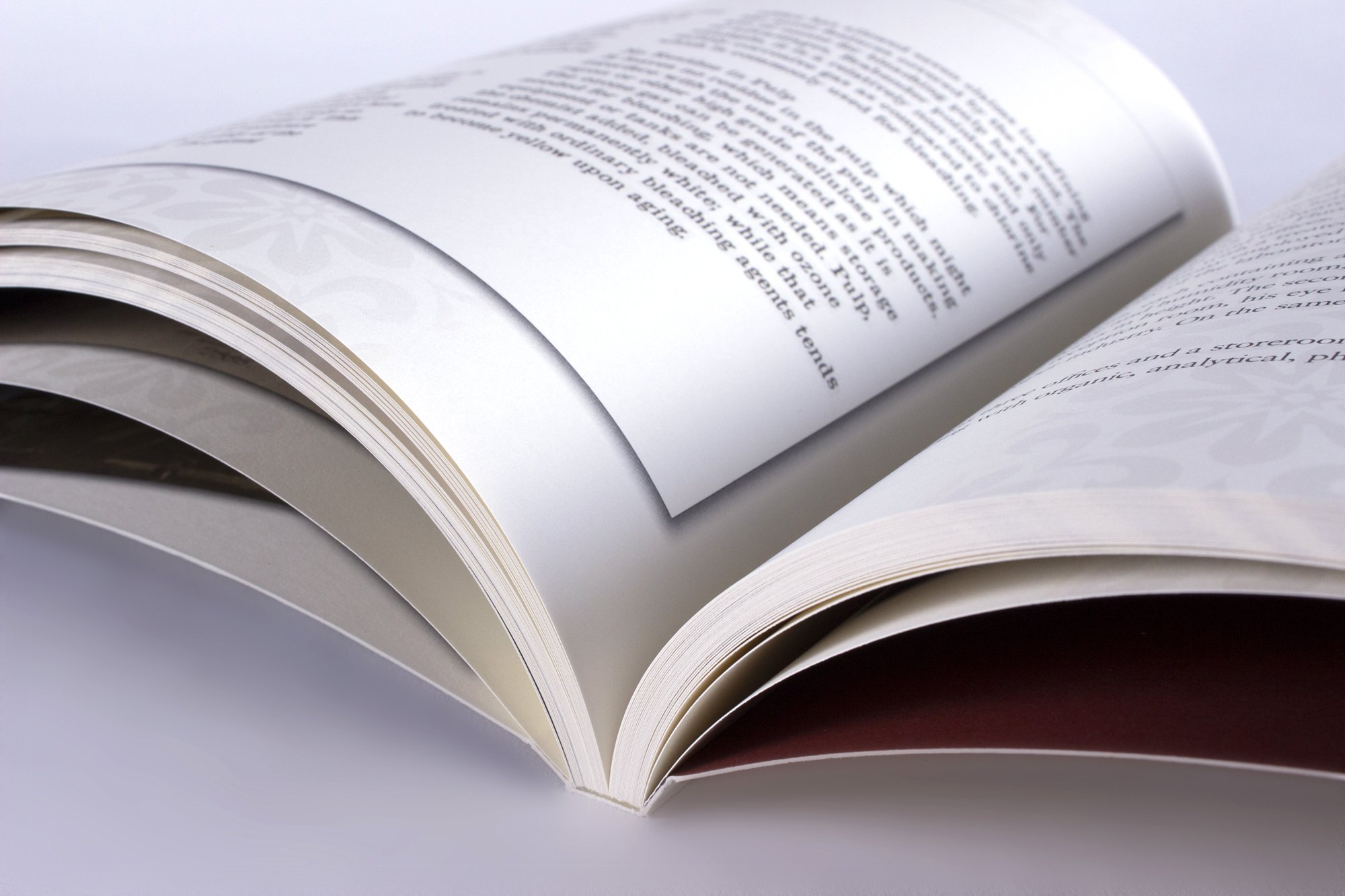
Paperback Book Binding Services
Graphic Finishing Services offers state-of-the-art book binding services using superior PUR adhesives, including Perfect, Lay-Flat (Otabind), Swiss, Tape and Plastic Coil binding types.
These equipment lines are capable of long and short runs of clean, professional-looking paperback publications. Combined with knife trimming and signature recognition, GFS provides multiple high-quality options.
Perfect Binding with PUR Adhesive
Imagine putting a standard Hot-melt book on steroids. That’s the superior strength and qualities that PUR Adhesive provides. With PUR Adhesive you can take the nastiest stocks, whether it’s cross-grain, coated, heavy ink coverage, plastic – you name it – and PUR Adhesive can bind it.
Perfect binding is often used for paperback novels, catalogs, manuals, and other publications where durability and a professional appearance are important.
For more information about PUR Adhesive, see our page about it.
Lay-Flat (Otabind) Binding
Lay-flat book binding refers to a type of binding method that allows a book to open flat and stay open without snapping shut. This is particularly useful for books with content that spans two pages, such as photography books, cookbooks, textbooks, or technical manuals.
For books that require the strength of PUR binding with the flexibility of a lay-flat cover, Lay-Flat is your solution. In the Lay-Flat process, signatures are gathered, milled, and bound with PUR adhesive to create a strong book block. The cover is then applied to the first and last pages of the book rather than directly to the spine. As a result, the covers of your lay-flat books “float” over the spine, allowing them to open completely flat.
Perfect Binding vs Lay-Flat Binding
There are a few key differences between the Perfect Binding and Lay-Flat binding processes.
When creating a book, choosing the right binding style is important to ensure your photos and pages are displayed in the best way possible. Lay-flat and Perfect binding are two of the most popular options when making books. Both offer advantages and disadvantages that should be considered before making a decision. Here are five things to consider when deciding between lay-flat vs perfect binding for your book.
Swiss Binding w/PUR Adhesive
Swiss binding, also known as Swiss brochure binding or Swiss pamphlet binding, is a type of binding method that involves securing loose pages directly to a cover without the use of signatures or sewing. This technique results in a clean, minimalist appearance and allows the book to lay flat when opened.
The cover may extend slightly beyond the edges of the pages, providing protection and reinforcement. Swiss binding is commonly used for smaller booklets, brochures, catalogs, or other publications where a sleek and contemporary look is desired. It offers a simple yet effective way to bind pages together without the need for stitching or staples.
Tape Binding w/PUR Adhesive
This style of binding is used to add color and would jazz up any book binding project. Imagine a standard perfect bound book but it includes a color tape around the spine and ¼” up on the front and back cover. Graphic Finishing Services offers a large variety of colors to choose from. From a job planning perspective covers need to be laid out as 2 – 2pgr’s rather then a 4pg wrap around cover. Instead of the cover wrapping around the guts, the colored tape will take its place.
Plastic Coil Spiral Binding
Plastic coil binding is a popular bookbinding method that involves inserting a continuous plastic coil through small holes punched along the spine edge of the book’s pages. The coil is then crimped or twisted at both ends to secure it in place.
Plastic coil binding allows the book to lay flat when opened and also enables the pages to be turned 360 degrees, making it convenient for reading and writing. It is commonly used for notebooks, calendars, manuals, cookbooks, and other types of documents that need to be easily navigated or written in.
One of the advantages of plastic coil binding is its durability and flexibility, as the coil can withstand frequent handling and can be easily opened and closed without damaging the pages. Additionally, plastic coil binding can accommodate a wide range of page sizes and thicknesses, making it a versatile option for various types of projects.






